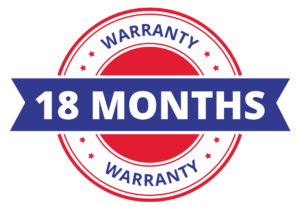Buying a car is a major financial decision, and mistakes can lead to overpaying, high-interest loans, or unreliable vehicles. Many buyers—especially first-time or budget-conscious shoppers—end up with bad deals because they don’t know what to watch out for.
This guide covers five of the most common car buying mistakes and how to avoid them to get the best deal possible.
1. Not Setting a Budget Before Shopping
One of the biggest mistakes buyers make is shopping for a car without a clear budget. Without one, you risk:
- Taking on a car loan you can’t afford
- Overlooking hidden costs like insurance, maintenance, and taxes
- Ending up with a high-interest loan due to a low down payment
How to Avoid This Mistake:
- Decide on a maximum monthly payment before visiting a dealership
- Factor in insurance, fuel, and maintenance costs
- Use an auto loan calculator to estimate payments before agreeing to financing
General Rule: Keep your monthly car payment under 15% of your take-home income to avoid financial strain.
2. Skipping the Vehicle History Report
If you’re buying a used car, never skip the vehicle history report. Some sellers hide accident damage, salvage titles, or past issues, leading buyers to purchase a car with hidden problems.
How to Avoid This Mistake:
- Request a CARFAX or AutoCheck report before buying
- Look for red flags such as salvage titles, odometer rollbacks, or multiple past owners
- If the seller refuses to provide a report, walk away—they may be hiding something
Pro Tip: Always verify that the VIN on the report matches the car’s actual VIN to avoid fraud.
3. Ignoring Loan Terms and Focusing Only on Monthly Payments
Some buyers focus only on the monthly payment, not realizing that longer loan terms with high-interest rates cost more in the long run.
Example:
| Loan Term | Loan Amount | Interest Rate | Monthly Payment | Total Interest Paid |
|---|---|---|---|---|
| 36 months | $12,000 | 9% | $382 | $1,752 |
| 72 months | $12,000 | 18% | $253 | $5,236 |
The lower monthly payment looks attractive, but the longer loan costs thousands more in interest.
How to Avoid This Mistake:
- Look at the total cost of the loan, not just the monthly payment
- Choose the shortest loan term you can afford to minimize interest paid
- Compare multiple financing offers before committing
4. Not Test Driving or Inspecting the Car
A car may look good on paper or in pictures, but hidden mechanical issues can be costly. Some buyers skip the test drive or vehicle inspection, only to discover problems after purchasing.
How to Avoid This Mistake:
- Always test drive the car for at least 15-20 minutes
- Pay attention to strange noises, slow acceleration, braking issues, and handling
- Have a mechanic inspect the car before buying, especially if purchasing from a private seller
Pro Tip: If a dealership refuses to let you test drive the car, that’s a major red flag.
5. Not Shopping Around for the Best Deal
Some buyers purchase from the first dealership they visit, without comparing prices or loan terms. This can lead to overpaying or accepting high-interest financing.
How to Avoid This Mistake:
- Get price quotes from multiple dealerships
- Compare financing offers from banks, credit unions, and Buy Here Pay Here dealers
- Negotiate the price—many sellers are willing to lower it if you ask
Pro Tip: Research the car’s market value using Kelley Blue Book or Edmunds before negotiating.
Final Thoughts
Avoiding these common mistakes can save you thousands of dollars and prevent headaches down the road. By setting a budget, reviewing vehicle history, comparing financing, and thoroughly inspecting the car, you can make a smart and confident purchase.
If you’re looking for a reliable used car with flexible financing, check out our Buy Here Pay Here dealership options today.









